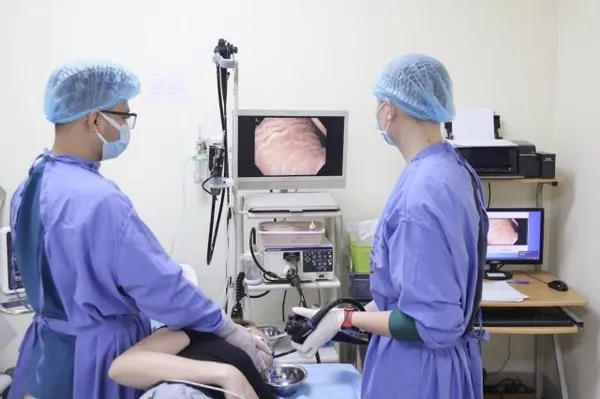 Society
Society

 |
| A doctor at Nguyễn Tri Phương Hospital in HCM City uses electronic medical records. VNA/VNS Photo |
HCM CITY — The adoption of electronic medical records (EMRs) by hospitals has been extremely slow largely due to lack of funds and technological infrastructure.
Only four public hospitals in HCM City have replaced the traditional paper-based record-keeping with digital systems: the HCM City University Medical Centre, Children’s Hospital, Nguyễn Tri Phương Hospital, and Trưng Vương Hospital, according to HCM City's Department of Health.
Across Việt Nam 70 healthcare facilities have switched to EMRs.
There are nearly 1,500 public hospitals and more than 300 private ones in the country.
Though the Ministry of Health wants all hospitals to switch to EMRs by 2025, the pace of change is slow, Nguyễn Trường Nam, deputy director of the ministry’s department of information technology, admitted.
He attributed it to the high costs of acquiring and installing the digital systems.
To switch to EMRs at a provincial-level hospital with 300-500 beds costs more than VNĐ10 billion (US$393,000).
It costs major hospitals such as Chợ Rẫy in HCM City, and Bạch Mai, Việt Đức and K hospitals in Hà Nội much more to acquire and implement EMR systems, he said.
Other factors for the tardy pace include lack of technological infrastructure.
Dr Lương Công Minh, deputy director of Nguyễn Tri Phương Hospital, said the shift began at his hospital at the beginning of this year.
It has cost VNĐ13 billion ($510,800) for equipment and devices and personnel training, he said.
EHRs bring numerous benefits to both patients and healthcare providers, helping doctors provide effective diagnosis and promoting quality of care and treatment outcomes, he said.
But their implementation continues to face challenges such as technical issues and high cost of use, he said.
Nguyễn Anh Dũng, deputy director of the HCM City Department of Health, listed other challenges such as staff limitations and privacy concerns.
Finding the funds to develop the required infrastructure and personnel is too challenging for many healthcare facilities, he added. —VNS




